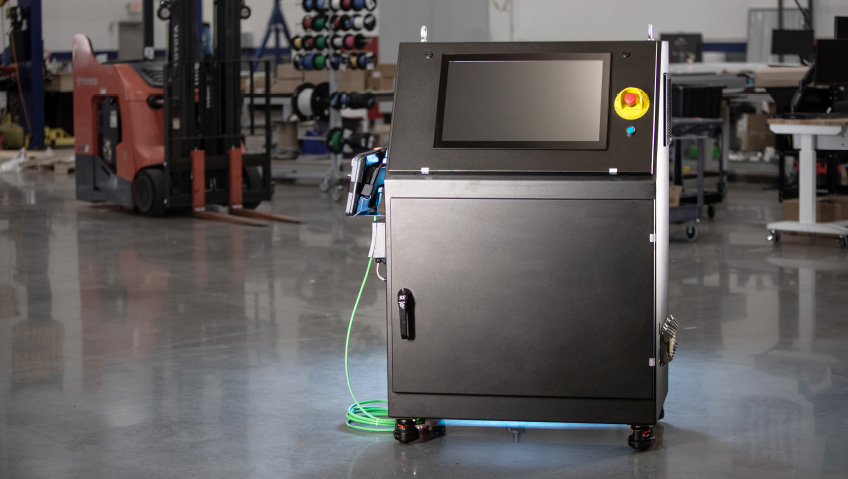Semiconductors are the fundamental building blocks of high-tech systems and a burgeoning sector of the Canadian economy. Industry analysts are bullish about growth potential in this sector, which is heavily concentrated in Ontario and Quebec, but experts note that expansion depends on acquiring and retaining skilled personnel to meet the rising demand.
“A semiconductor, often called a chip or microchip, is a material used for electrical conductivity. Its conductivity falls between a conductor and an insulator, giving it the unique ability to control the flow of electricity in electronic equipment and devices,” explains Innovation, Science, and Economic Development Canada (ISED).
For now, the long-established and innovative Canadian semiconductor sector is thriving. It continues to succeed in global markets, capitalizing on an increasingly digital and green economy. “Canada is recognized as an R&D and design hub, with world-leading expertise in high-value areas such as compound semiconductor fabrication and advanced packaging,” adds the ISED.
Indeed, semiconductors have become ubiquitous. They power virtually all electronic devices and systems, including appliances, smartphones, computers, automobiles, medical equipment, and satellites. From agriculture to aerospace, medical to mining, nearly all sectors rely on chips and semiconductor-driven sensors and systems.
Semiconductor production consists of three main segments: design and testing; fabrication; and assembly with final testing and packaging. The design phase, covering validation, verification, and testing, can take years and requires significant investment. Fabrication involves etching components onto silicon wafers, while the final segment focuses on assembly and packaging. Most chips are made from a single element—silicon—while compound semiconductors combine two or more elements to offer superior power and speed for next-generation applications such as EV power electronics and 5G/6G data transmission.
A new organization called FABrIC, dedicated to accelerating the Canadian semiconductor sector, has come on the scene as a collaboration between ISED and CMC Microsystems. It is backed by over $220 million from the federal Strategic Innovation Fund (SIF), and its mission is to lower barriers for Canadian companies developing semiconductor manufacturing processes, creating IoT products and services, and exporting to global markets.
“Funds from FABrIC will be distributed across startups, established firms, and post-secondary research institutions. Consistent, stable funding is critical if the industry is to grow and scale over the long term—something FABrIC provides,” said Gord Harling, CEO of CMC Microsystems, in a July 2024 EE Times article. In June, FABrIC awarded several million dollars to fund 20 projects pitched by promising firms.
Beyond FABrIC, Ottawa has provided direct cash infusions to several companies. In March 2023, the federal government allocated $36 million from the SIF to Ottawa-based Ranovus to boost domestic manufacturing and production of semiconductor products. In April 2024, the Trudeau government invested another $60 million in the sector, funding projects including IBM Canada’s semiconductor packaging plant in Bromont, Quebec.
“Semiconductors are part of our everyday life. They are in our phones, our cars, and our appliances,” stated François-Philippe Champagne, Minister of Innovation, Science and Industry. “Through this investment, we are supporting Canadian innovators, creating good jobs, and solidifying Canada’s semiconductor industry to build a stronger economy.”
Ontario and Quebec share Ottawa’s enthusiasm. “Ontario has emerged as a strategic hub for the industry that powers our modern world,” claims Invest Ontario. “Semiconductor and electronics businesses can find success in Ontario at every stage of the product lifecycle by tapping into the province’s R&D prowess, advanced manufacturing capabilities, and vast market potential.”
The Government of Ontario estimates that the province is home to roughly 180,000 electronics jobs, accounting for about half of Canada’s total. In 2022, semiconductors contributed more than $800 million to Ontario’s GDP, with exports exceeding $1 billion. Canada’s Semiconductor Council (CSC), a national trade group, supports the sector through services and research. CSC identifies Toronto/Markham, Ottawa/Kanata, Montreal/Bromont, and Sherbrooke as major hubs, while Waterloo, Saskatoon, Calgary/Edmonton, and Vancouver are growing ecosystems.
In June 2025, CSC released Strengthening Canada’s Semiconductor Talent Pipeline for Global Competitiveness based on industry leader surveys. Nearly three-quarters of firms surveyed anticipate doubling in size over five years, calling for thousands of new engineers. However, 80 percent of leaders cited talent shortages as the single biggest barrier to revenue and growth.
“Canada has a significant opportunity to add billions of dollars to its GDP by expanding the talent pool required to support the projected growth of the country’s semiconductor industry,” reads the CSC report.
The report points to several reasons for the shallow talent pool:
• Competition from other tech industries
• Talent drain to the United States
• An aging workforce nearing retirement
• A limited number of Canadian graduate students in relevant programs
To address these challenges, the report suggests:
• Streamlining immigration for skilled workers in in-demand sectors
• Enhancing graduate programs in semiconductor-related fields
• Investing more resources in STEM education
• Easing repatriation of Canadians who moved abroad
• Engaging retirees who still wish to contribute
While trade turbulence adds complexity with the threat of tariffs, Canada’s semiconductor industry seems to be doubling down on collaboration and diversification. And Harling noted that “Canada’s focus on design and niche technologies such as photonics and compound semiconductors means the country’s semiconductor industry is less likely to be affected by tariffs. You can send an email with a design in it. It’s not going to get a tariff barrier.”
Beyond trade deals, there is still plenty that can be done at home to ensure a strong, profitable semiconductor sector. “Canada’s semiconductor industry has the potential to significantly boost the national GDP by addressing the talent shortage that is currently limiting its growth. With talent being identified as the number one barrier to expansion, targeted initiatives and strategic investments in workforce development can unlock tremendous economic value,” reads the CSC report.
Canada’s semiconductor future hinges on design excellence and developing a robust, skilled workforce through strategic investments such as FABrIC and SIF funding. Without boosting STEM education, streamlining skilled immigration, and engaging seasoned professionals, talent shortages will curb growth and weaken Canada’s competitive edge. By filling these gaps, diversifying trade, and leveraging its R&D strengths, Canada can meet global demand, spark further innovation, and cement its leadership in the semiconductor revolution.





